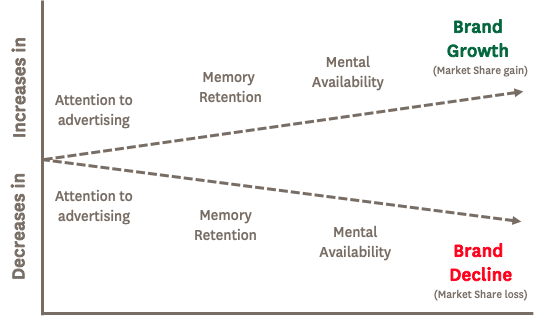Five Reasons Why Mobile In-Game Advertising Grabs Attention
by Grace Dillon on 20th Sep 2023 in News

In association with Digital Turbine.
Ahead of ATS Singapore 2023, James Rogers, VP brand sales, APAC at Digital Turbine, outlines why the mobile in-game ad format excels at capturing consumers' attention.
In the ever-evolving landscape of digital advertising, mobile gaming has emerged as a powerful channel for marketers to capture the attention of their target audience.
In studies conducted with attention measurement experts Lumen and Amplified Intelligence, interactive ads within mobile games outperform social and web video by over ten times in terms of attention – grabbing (on average) 22 seconds of attention per ad.
But what is it about ads in mobile games that make them so effective? In this article, we explore five reasons why mobile in-game advertising helps brands grab the attention of audiences of all kinds.
1. Natural breaks in gameplay
One key advantage mobile gaming has over nearly all digital channels is the natural ad breaks within gameplay. Unlike interruptive ads that disrupt the user experience, games are designed with intermissions between missions or levels, with ads seamlessly integrated into the gaming environment.
Users are more receptive to advertisements when they are ready to take a break, making intermissions an opportune time for brands to connect with their audiences. Wouldn’t you prefer to interact with an ad during a break rather than while playing games or consuming content?
2. Win-win for users and brands: rewards for engagement

One of the most effective aspects of mobile in-game advertising is the option for users to receive rewards after engaging with targeted ads. In fact, rewarded video is the most preferred digital video format, being favoured by 69% of users across Asia, according to a GWI study. This is head and shoulders above skippable or auto-play pre-roll.
Rewarded video allows gamers to choose to watch an ad in exchange for an in-game prize, such as an extra life, virtual currency, or exclusive items that enhance the game experience. This incentive-driven approach encourages users to willingly engage with ads, creating a win-win scenario for both advertisers and gamers. Studies also revealed that rewarded video ads outperform other formats at increasing positive emotions towards the brand after viewing.
Brands gain valuable exposure and engagement, and get to meet users at a moment when they are in a relaxed and positive state. This immediate value-exchange is unique to mobile gaming.
3. Gamers are in an active mindset
Mobile in-game advertising has a unique advantage when it comes to grabbing attention because it taps into the active mindset of players. When consumers pick up their smartphones to play games, they enter an active state of mind, ready to engage and interact. This differs from the passive state that most people are in while scrolling through social media or watching OTT or CTV.
In mobile gaming, players are prepared to think critically and react swiftly, making them inherently more responsive to the content served to them, including ads. This alertness goes hand-in-hand with in-game ads’ ability to incorporate interactive elements, allowing users to stay in that active mindset throughout their gaming experience.
Mobile gamers are also likely to stay in that active mindset when they are given some autonomy over their ad experience. In-game ads are met with more positivity and willingness to engage compared to ads that feel intrusive to the user. Brands that leverage this active mindset can create compelling ad campaigns that not only grab users' attention but also foster meaningful and favourable relationships with audiences.
4. Gamers are only on one screen
Second screening (the use of a secondary screen or a device while already engaging with another) is a phenomenon that is growing in our everyday lives. According to a recent report, almost 70% of Gen Zers say they use social media while watching TV, and the figure is even higher for Millennials.

However, the situation is different when people play games. Gaming requires players’ complete attention, as a single misstep can cause them to fail a whole level. As such, gamers’ attention is naturally focused on a single screen – for mobile gamers, their smartphone screen.
The undivided attention given to gaming — and, as a result, to in-game ads — makes it more likely for players to remember the ads they are shown. This creates greater mental availability for the brand, which could lead to eventual brand growth.
5. Enhanced ad creative experience with rich media
Mobile games offer advertisers a canvas for creativity that extends beyond traditional video ads. In-app ads can be fully customisable and interactive, allowing brands to craft engaging experiences for users. Whether it's a mini-game, interactive storytelling, or a gamified advertisement, mobile in-game advertising provides a platform where users are already inclined to interact.

An award-winning instance of using interactive ads in mobile gaming is showcased in POND'S Men Bright Boost campaign, a campaign tailored for Indonesian male Millennials aged 18 to 35. The interactive mobile experience campaign drew users in, achieving an engagement rate of more than 70%. The campaign's success in raising brand recognition and fostering engagement underscores the potential of innovative ad strategies in the gaming space.
Mobile in-game advertising’s ability to leverage natural breaks in gameplay, provide rewards for engagement, offer creative and interactive experiences, and keep consumers in an active mindset make it a valuable asset to brands’ digital advertising strategies. As mobile gaming continues to be a popular pastime, brands that embrace in-game advertising will be well positioned to connect with their audience in a meaningful way, ultimately driving better results for their campaigns.
To hear more from Digital Turbine, and a wealth of other experts in ad tech, get your ATS Singapore 2023 tickets today.
ATS SingaporeAttentionGamingIn-GameMobile








Follow ExchangeWire